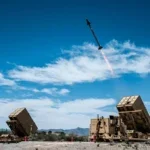
BAE Systems showed off a combination of mature technologies from throughout the company’s portfolio, many of them related to the now-canceled Ground Combat Vehicle, as a sign to Army officials visiting during the Association of the United States Army’s annual conference what the not-so-distant future could look like for ground combat units. Dean Medland, business development director for combat vehicles, said that the Future Technology–essentially BAE’s GCV entrant plus additional weapons and sensors for situational awareness-–is meant to force Army…













